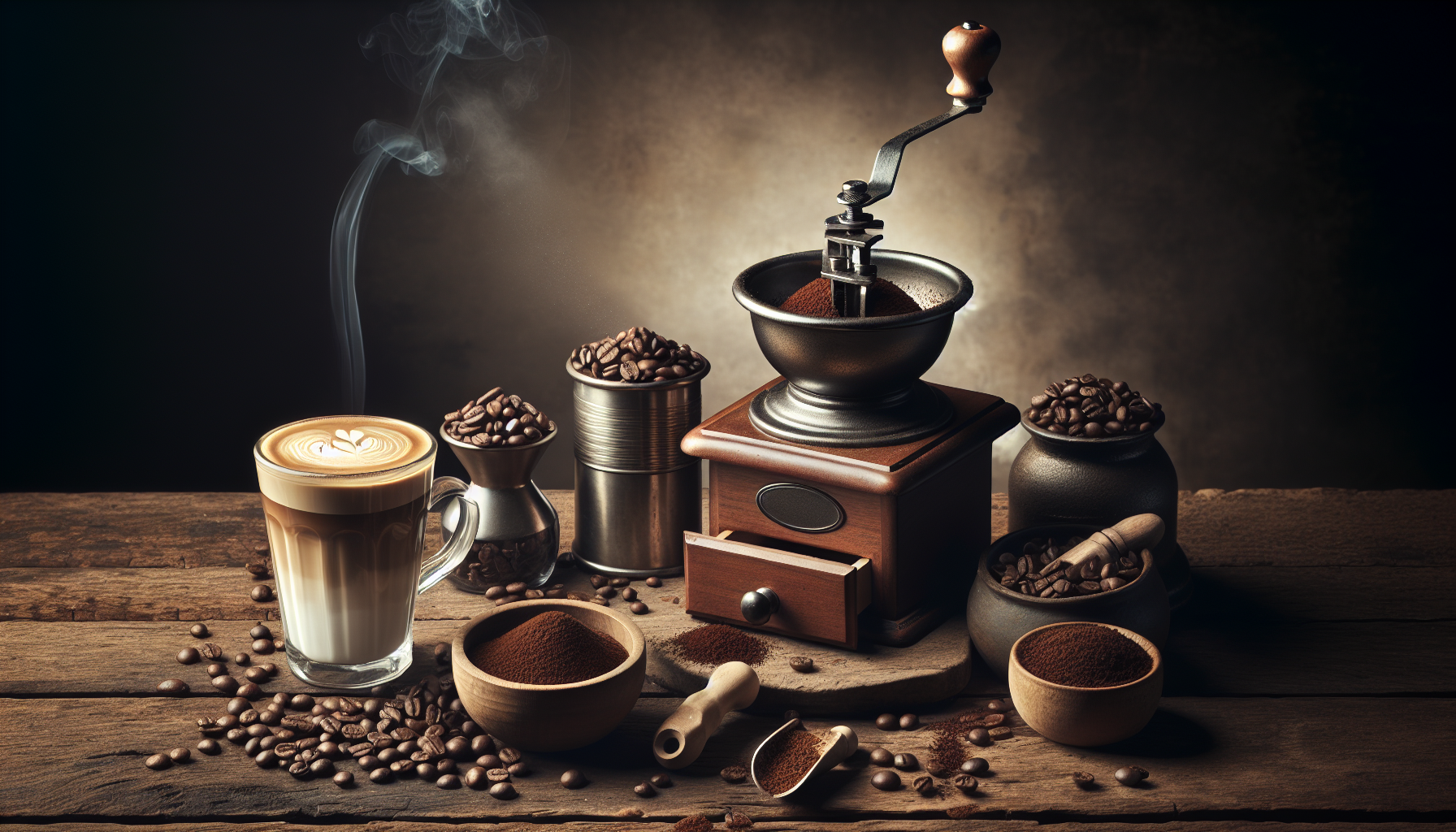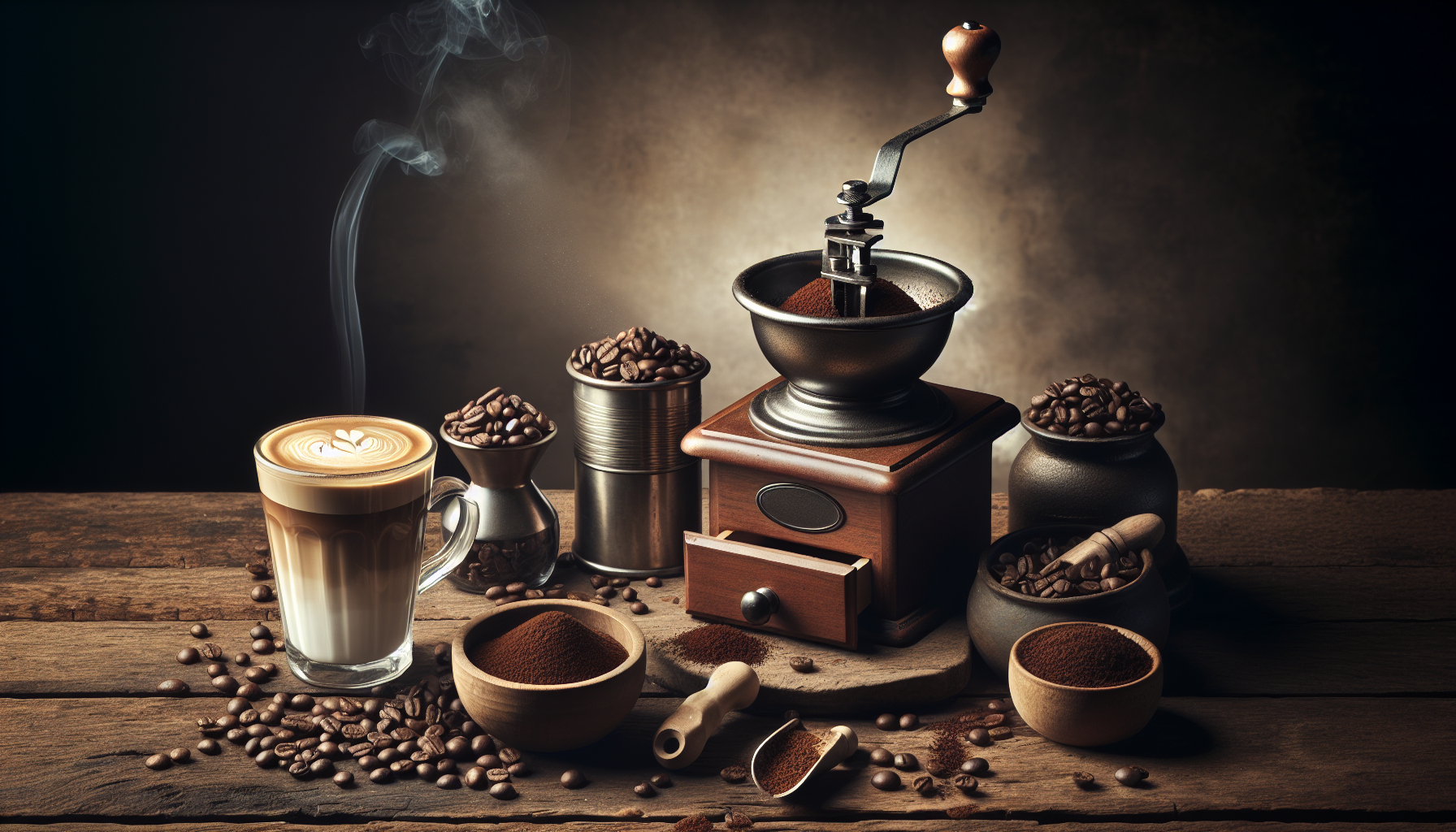Do you love starting your day with a perfect cup of coffee? Have you ever wondered why the grind size of your coffee beans plays such a crucial role in the flavor of your brew? Well, fret not, because we are here to demystify the grind rule for coffee. The grind size actually determines how fast the water extracts flavors from the coffee grounds, ultimately impacting the taste and strength of your cup. Join us as we uncover the secret behind achieving that ideal grind size to elevate your coffee experience to new heights.
What is the grind rule for coffee?

CHECK OUT COFFEE GRINDERS ON AMAZON
Understanding the importance of coffee grind
When it comes to brewing a perfect cup of coffee, the grind size plays a crucial role. The grind refers to the coarseness or fineness of the coffee particles, which impacts the extraction process. Achieving the right grind size is essential because it determines how quickly the water extracts flavor from the coffee grounds. To optimize the extraction process and yield a delicious cup of coffee, it is important to understand the importance of the grind rule.
What is the grind size?
Grind size refers to the degree of coarseness or fineness of the coffee grounds. There are different grind sizes available, ranging from very coarse to very fine. These sizes are usually measured by the size of the particles or by the time it takes for water to pass through them. Grind size is commonly categorized into coarse, medium, and fine, with various variations within these categories. Each brewing method requires a specific grind size to achieve the desired flavor profile.
How does grind size affect coffee extraction?
The grind size has a significant impact on the coffee extraction process. When water comes into contact with coffee grounds, it extracts the soluble compounds, including the oils, acids, and sugars that give coffee its unique flavor profile. Finer grind sizes have a larger surface area, allowing for quicker extraction. This results in a higher concentration of flavors, but it also increases the risk of over-extraction, leading to a bitter taste. Coarser grind sizes have a smaller surface area, leading to slower extraction and a lighter flavor profile.
Why is grind consistency important?
Grind consistency is crucial for achieving a balanced and consistent extraction. Inconsistent grind size can result in uneven extraction, causing some grounds to under-extract while others over-extract. This can lead to a cup of coffee that lacks complexity and flavor consistency. To ensure a consistent flavor profile in every cup, it is important to achieve a uniform grind size. Consistency allows for even water flow and extraction, resulting in a well-balanced coffee with rich flavors.
The grind rule for different coffee brewing methods
Different brewing methods require specific grind sizes to achieve optimal results. Let’s explore the grind recommendations for some popular brewing methods:
– Espresso:
Espresso machines require a fine and consistent grind size. This allows for a short brewing time while still producing a flavorful and concentrated shot of coffee.
– Pour-over:
Pour-over methods such as the V60 or Chemex typically call for a medium-fine grind size. This allows for a balanced extraction, bringing out the nuanced flavors of the coffee.
– French press:
French press brewing requires a coarse grind size. The prolonged steeping time compensates for the larger coffee grounds and results in a full-bodied and robust cup of coffee.
– Cold brew:
Cold brew requires a very coarse grind size. The extended brewing time in cold water extracts the flavors slowly, resulting in a smooth and less acidic coffee concentrate.
– Aeropress:
The Aeropress method can be customized based on personal preference. However, a medium-fine grind size is often recommended to achieve a balanced and flavorful cup.
– Moka pot:
The Moka pot brewing method benefits from a fine to medium-fine grind size. This allows for effective extraction and creates a strong and concentrated coffee.
Understanding the purpose of grinding coffee beans
Grinding coffee beans is an essential step in the coffee preparation process. It breaks down the beans into smaller particles, exposing a larger surface area to water. This increased surface area allows for more efficient extraction of flavor compounds during brewing. By grinding the beans, you are essentially unlocking the flavors and aromas trapped inside the coffee beans, resulting in a more flavorful and enjoyable cup of coffee.
Influence of grind size on taste
The grind size significantly impacts the taste of the final cup of coffee. Finer grind sizes tend to extract more quickly and result in a more intense and bold flavor profile. On the other hand, coarser grind sizes extract more slowly, resulting in a milder and lighter taste. Finding the right balance between extraction time and grind size is essential for achieving the desired flavor profile.
Aroma extraction and its relation to grind
The grind size also affects the aroma extraction during the brewing process. Finer grind sizes provide a larger surface area, allowing for a more robust and aromatic extraction. The aroma compounds in coffee are released more readily when the coffee particles are finely ground. These aromas contribute to the overall sensory experience and add complexity to the flavor profile of the coffee.
Balancing flavor notes through grind adjustments
The grind size can be adjusted to manipulate the flavor notes in your coffee. If you find your coffee is too bitter or over-extracted, you can try using a coarser grind to reduce extraction time and minimize bitterness. On the other hand, if your coffee lacks depth and complexity, a finer grind can increase extraction, bringing out more flavors and enhancing the overall taste experience. Experimenting with different grind sizes allows you to fine-tune your brew and tailor it to your personal preferences.
Recognizing the impact of grind on final cup quality
The grind size is a crucial variable in the brewing process that directly affects the quality of your cup of coffee. Regardless of the brewing method, achieving the desired grind size is essential for extracting the right balance of flavors. By understanding the impact of the grind on the final cup, you can take control of your coffee brewing and consistently enjoy a high-quality and flavorful cup of coffee.
Understanding the parameters of coffee brewing
Grind size is one of the key variables in the coffee brewing process. Alongside factors such as water temperature, brew time, and coffee-to-water ratio, it plays a vital role in controlling extraction. Different combinations of these variables can result in unique flavor profiles, allowing you to explore and experiment with various brewing techniques.
Controlling extraction with grind size
Grind size helps control the extraction process by regulating the rate at which water interacts with the coffee grounds. Finer grind sizes increase the surface area in contact with water, leading to faster extraction. Coarser grind sizes slow down the extraction process, allowing for a more controlled and balanced extraction. By adjusting the grind size, you can fine-tune the extraction to achieve your desired flavor profile.
Achieving optimal extraction using grind
To achieve optimal extraction, it is important to select the right grind size for your brewing method. Different brewing methods require different levels of extraction, and the grind size plays a crucial role in determining this. Finding the ideal balance between a well-extracted cup that highlights the coffee’s flavors without excessive bitterness or sourness is the key to a great-tasting brew.
Experimenting with different grind sizes for desired results
As a coffee enthusiast, don’t be afraid to experiment with different grind sizes. Each brewing method and coffee variety may require slight adjustments to the recommended grind size to achieve your desired taste. Take notes, make small changes, and observe how each adjustment affects the final cup. This way, you can develop a deeper understanding of how grind size influences your coffee and discover your perfect brew.
An overview of Moka pot brewing
The Moka pot is a traditional stovetop coffee maker that produces a strong and concentrated coffee often compared to espresso. It consists of two chambers – a lower chamber for water and an upper chamber for ground coffee. As the water heats up, pressure builds up and forces the water through the coffee grounds, producing a rich and flavorful brew.
Stovetop extraction method
The Moka pot utilizes a stovetop extraction method, where heat from the stovetop creates pressure to force the hot water through the coffee grounds. This method allows for quicker extraction compared to other manual methods like pour-over or French press.
CHECK OUT COFFEE GRINDERS ON AMAZON
Achieving strong and concentrated coffee
The Moka pot brews a strong and concentrated cup of coffee that is often described as having a bold flavor profile. The combination of the pressure and heat during the brewing process extracts the oils and flavors from the coffee more intensively, resulting in a robust and full-bodied coffee.
Grinding considerations for Moka pot
For Moka pot brewing, a fine to medium-fine grind size is recommended. This allows for efficient extraction and prevents the coffee from becoming too bitter or over-extracted. A grind size that is too fine may result in clogging the filter and can negatively impact the brewing process. It is important to find the right grind size that balances the extraction time and flavor profile to achieve a delicious cup of Moka pot coffee.
By understanding the grind rule for coffee and paying attention to the grind size, you can master the art of brewing coffee and unlock a world of flavors in your cup. Experiment with different grind sizes, explore various brewing methods, and enjoy the wonderful journey of discovering your perfect cup of coffee. Cheers to a great brew!

